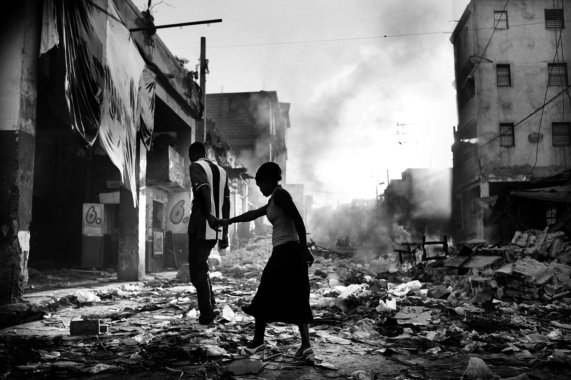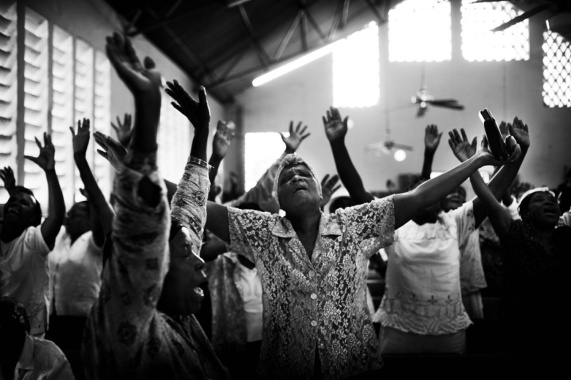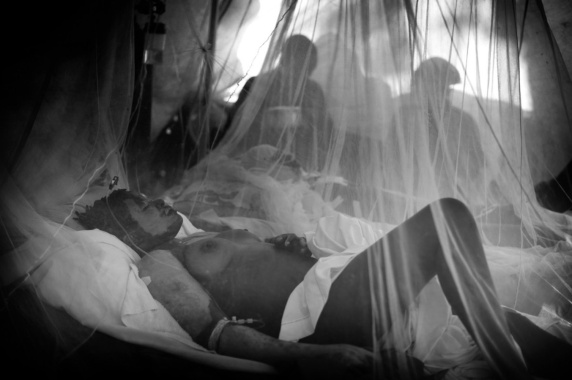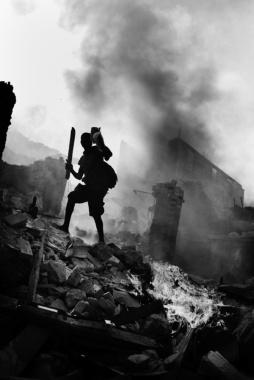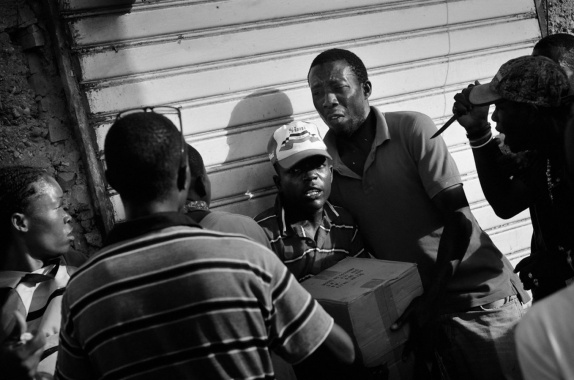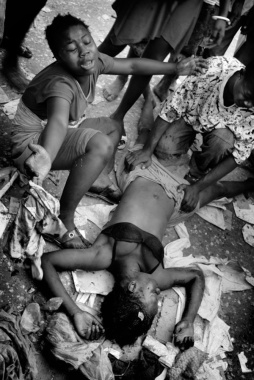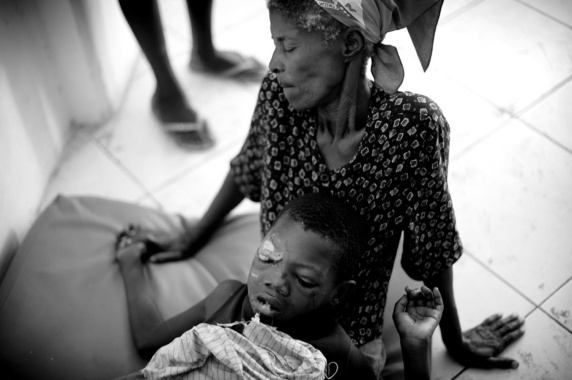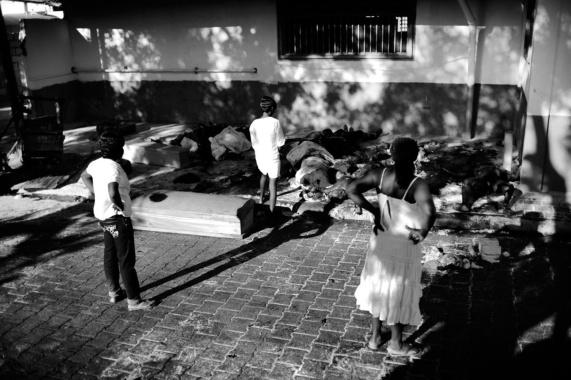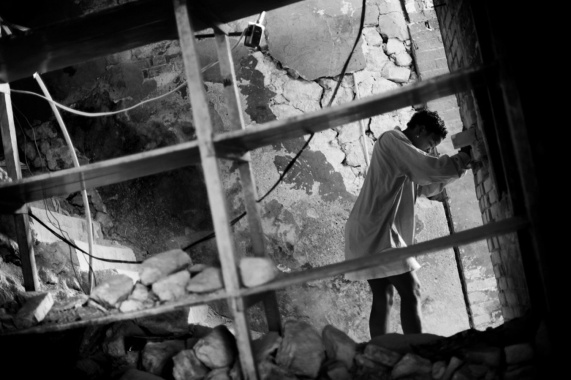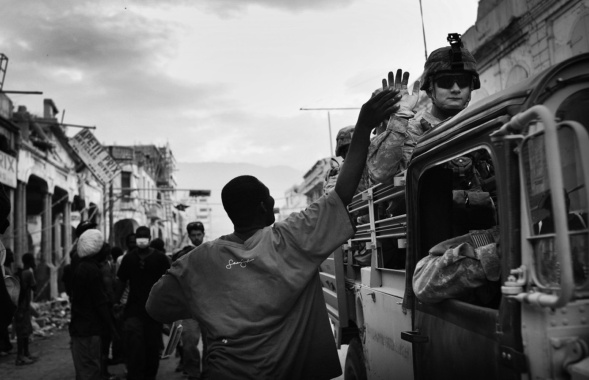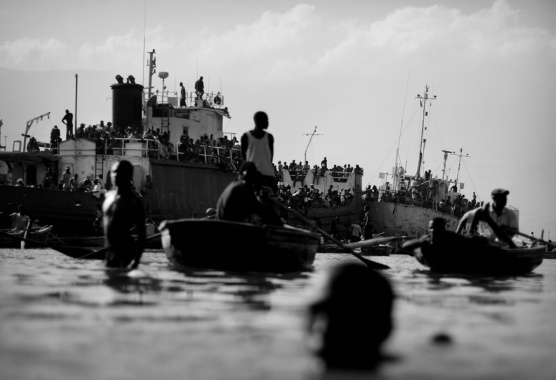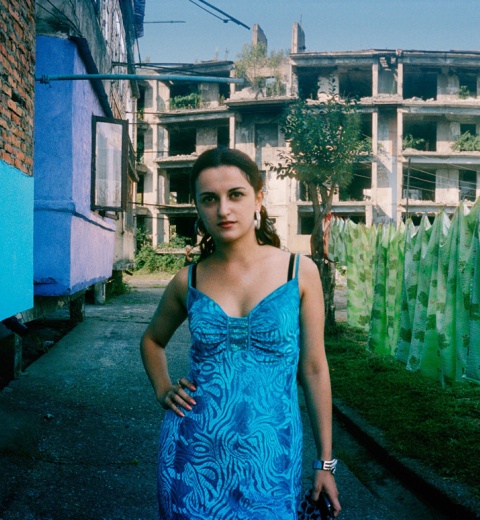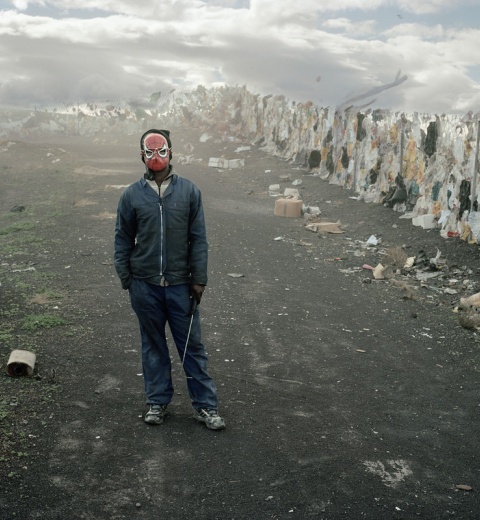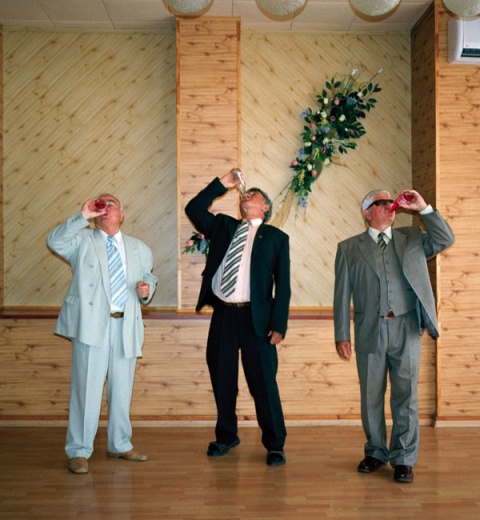Jan Grarup – Haiti Aftermath, 2011
A devastating earthquake struck the island of Haiti on January 12, 2010. Commissioned by different magazines, the Danish photographer travelled to the Caribbean state, to report on the effects of the natural disaster. In 2011, his series was granted the Leica Oskar Barnack Award.
The destruction is appalling. A precise count and identification of the dead is difficult due to the enormous devastation; the number of victims can only be estimated. The government assumed then a death toll of around 300,000, with more than three million affected by the quake. Around 1.85 million people were left homeless. The earthquake is therefore considered to be the most severe quake in the history of the Americas. Grarup saw his mission as a photographer as much more than the simple depiction of the current situation: “Seeing all the suffering going on in a place like Haiti in the aftermath of the earthquake, I feel obliged to do so. As photographers we have a responsibility to do this in order to tell the stories as honestly and as in-depth as we can. It’s a hard job.” His pictures still lead the viewer to the limits of human despair, dignity, suffering and hope. Even the photographer himself had to endure the desperate situation on location: “I consider photojournalism as one way of helping people to understand. I am not saying that my work has helped; but I honestly and sincerely hope it has.”
“I feel that we, the people in richer parts of the world, have an obligation to get involved in places where people have next to nothing in order to survive. Photojournalism can potentially help if the stories are told in-depth, with a lot of empathy and with heart.”
The aim of Grarup’s black and white shots is to generate emotion. The earthquake took everything the Haitians had: their belongings, their friends and relatives. Their lives lie in ruins. Fear and despair are written on their faces. They have lost all they ever owned and, in their search for food and water, often even risk the only thing left to them: their lives. The police and private security forces attempt to protect the remaining stocks of provisions and do not hesitate to defend them with weapons, as Grarup’s images show. The fact that the pictures continue to have an impact is entirely in the photographer’s interest, because “it’s very important for me that people remember what’s going on in the world long after the more ‘fast forward’ media has left a place. A story doesn’t just go away just because the media leaves. It’s not so important if they remember my pictures specifically, as long as they remember the issues and the fact that something is going on beyond their own backyard.”
(Text updated 2020)
“I consider my work has many layers and that it often gains more meaning by being looked at in a deeper way. Basically, one could argue that it is up to the viewers how much information they want to draw out of my images.”
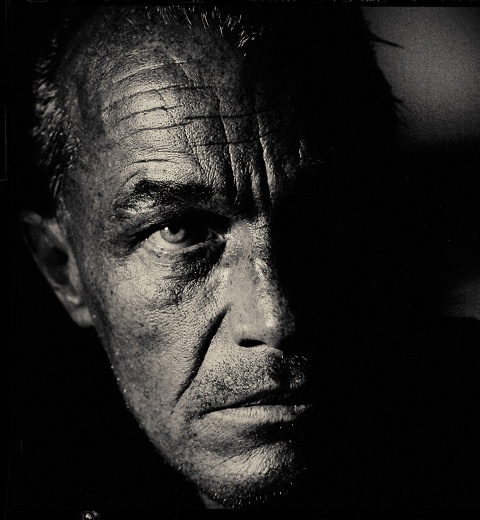
Jan Grarup
Born in 1968, Grarup has travelled almost the whole world in the past decades and photographed many of recent history’s defining human rights and conflict issues. The work reflects his belief in photojournalism’s role as an instrument of witness and memory to incite change, and the necessity of telling the stories of people who are rendered powerless to tell their own. His images of the Rwandan and Darfur genocides provide incontrovertible evidence of unthinkable human brutality, in the hope that such events will never happen or be allowed to happen again. During the development of his projects, Grarup often works hand in hand with aid organisations such as Doctors without Borders and UNICEF. He has already won numerous prestigious awards within the photography industry, such as the World Press Photo, and from human rights organizations, such as UNICEF. He is based in Copenhagen.
